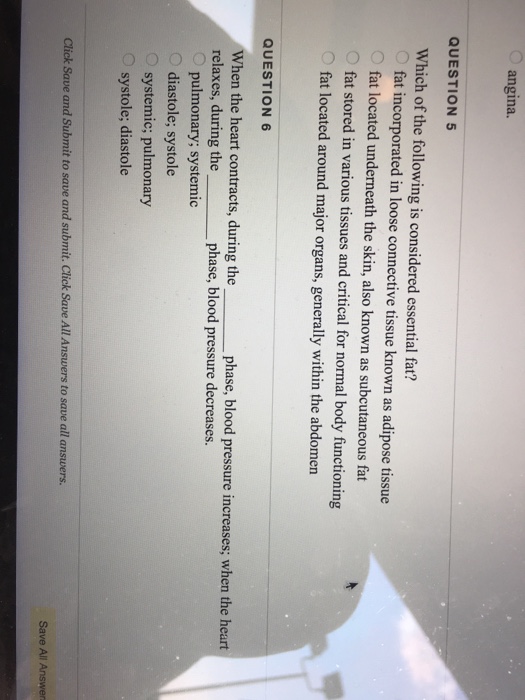 Solved: Which Of The Following Is Considered Essential Fat... | Chegg.com
Solved: Which Of The Following Is Considered Essential Fat... | Chegg.comBody fat types: Benefits, Hazards and MoreDespite the extensive use of the word "grase" to describe all body fat, there are actually several different types of fat in your body. Some types of fat may have a negative effect on your health and contribute to the disease. Others are beneficial and necessary for your health. The cells are white, brown and beige cells. They can be stored as essential, subcutaneous or visceral fat. Each type of fat serves a different role. Some promote metabolism and healthy hormone levels, while others contribute to life-threatening diseases, including: Read more about different types of body fat. White fat is the type of fat that most people think immediately. It is composed of large white cells that are stored under the skin or around organs in the belly, arms, buttocks and thighs. These fat cells are the form of the body to store energy for later use. This type of fat also plays a great role in the function of hormones such as:While a white fat is necessary for good health, too much white fat is very harmful. Healthy body fat percentages vary depending on your fitness level or physical activity. According to , men who are not athletes should have a total percentage of body fat in the range of 14 to 24 percent, while women who are not athletes should be in the range of 21 to 31 percent. A percentage of body fat above the recommended may put at risk the following health problems: it is a type of fat that is mainly found in babies, although adults still retain a very small amount of brown fat, typically in the neck and shoulders. This kind of fat to keep you warm. Researchers are interested in finding ways to stimulate brown fat activity to help prevent obesity. Beige fat (or brita) is a relatively new area of research. These fat cells work somewhere between brown and white fat cells. Similar to brown fat, beige cells can help burn fat instead of storing it. It is believed to be released when stressed, cold or when exercise is done can help convert white fat into beige fat. This is an exciting area of research to help prevent obesity and maximize healthy body fat levels. Essential fat is exactly that — essential for your life and a healthy body. This fat is found in its: Essential fat plays an important role in hormonal regulation, including hormones that control fertility, vitamin absorption and temperature regulation. According to , women need at least 10 to 13 percent of their body composition to come from essential fat to good health, while men require at least 2 to 5 percent. refers to fat stored under the skin. It is a combination of brown, beige and white fat cells. Most of our body fat is subcutaneous. It is the fat that can be tightened or pinched in the arms, belly, thighs and buttocks. The aptitude professionals use the calipers to measure subcutaneous fat as a way of estimating the total percentage of body fat. A certain amount of subcutaneous fat is normal and healthy, but too much can lead to unbalanced hormone levels and sensitivity. , also known as "rule oil", is the white fat that is stored in your abdomen and around all its principal organs, such as the liver, kidneys, pancreas, intestines and heart. High levels of visceral fat can increase the risk of diabetes, heart disease, stroke, artery disease, and some cancers. Body composition is very important. Your body will work better with a suitable overall fat percentage. Having a percentage of healthy body fat provides many benefits, such as: Having too much white fat, especially visceral fat, can be harmful to your health. Visceral fat can increase the risk of the following health conditions: Body composition can be measured using. A common method to estimate the percentage of body fat is skin measurements. A trained technician can use calipers, an instrument similar to that of the hand, to pinch and measure skin folds in the arms, waist and thighs to estimate the total percentage of body fat. This method measures mainly subcutaneous fat. Another method is to use a device called Bod Pod. During an evaluation of body composition, the design uses body weight ratios and volume to determine the total percentage of fat. This method theoretically measures all types of fat present in your body. Bioelectrical impedance analysis is another method to determine the percentage of body fat. It is often used in athletic sports facilities. This test involves standing on a device that uses electric current to measure the amount of lean mass versus fat in your body. and circumference tests of the waist can also be useful. Although they do not provide a specific percentage of body fat, they do provide an estimate based on their height and weight. The BMI is calculated as a weight-to-height ratio, while the waist circumference is a measurement of the smallest part of the waist. According to , a BMI exceeding 25 is considered overweight, while a BMI exceeding 30 is considered obese. A waist circumference of more than 35 inches in women and 40 inches in men is considered to be a higher risk of disease, as increased waist circumference may indicate the presence of visceral fat. A common assumption is that a high fat diet is what makes a person too much body fat. This is only partially true. While fat is higher in calories than carbohydrates or proteins, people need a certain amount of dietary fat for good health. refined and processed foods that are high in carbohydrates and low in fiber can also cause weight gain. People with high diets in refined sugars and processed foods are often more prone to visceral fat, which is more dangerous as a predictor of disease than subcutaneous fat. The calories consumed that are not required by the body will be stored as fat reserves. In terms of gaining or losing weight, the total number of calories you take against the calories you burn every day is what matters, instead of whether those calories are fat, carbohydrates or protein. Most experts recommend a , complex carbohydrates, and fiber with moderate portion sizes. A healthy diet is more effective when combined with a regular exercise program. in particular it is effective in increasing metabolism, building lean muscle mass, and preventing the increase of long-term fat. There are three different types of fat cells in the body: white, brown and beige. Fat cells can be stored in three ways: essential, subcutaneous or visceral fat. Essential fat is necessary for a healthy and functional body. Subcutaneous fat is most of our body fat and is found under the skin. This is the body method of storing energy for further use. Visceral fat is found in the abdomen among the main organs. It can be very dangerous at high levels. A high percentage of body fat, and in particular the presence of visceral fat, can increase your risk of a number of diseases. To promote weight loss or prevent weight gain, make sure you eat the same number of calories you burn, or eat less calories than you burn. A high protein diet combined with regular exercise is particularly effective in preventing visceral fat stores. Last medical review on May 24, 2019Read this following
You approved a FreeText for your class? Click here to warn us! 6.3: How much fat is needed? Fat is a necessary component of daily nutrition. It is needed for a healthy cell function, energy, damping for vital organs, isolation and food taste. Fat storage in the body consists of two types of fat: essential and non-essential fat. Essential fat is the minimum amount of fat required for normal physiological function. For men and women, essential fat values are generally considered 3% and 12%, respectively. Fat above the minimum amount is known as nonessential fat. It is generally accepted that a global range of 10-22 percent for men and 20-32 percent for women is considered satisfactory for good health. A body composition within the recommended range suggests that a person has less risk of developing obesity-related diseases, such as diabetes, high blood pressure and even some cancers. A woman's essential fat range is naturally greater than a man's range due to fat deposits in the breasts, uterus and sex-specific sites. In both men and women, non-essential fat reserves can be healthy, especially to provide substantial amounts of energy. Excessive body fat is classified by overweight and obesity terms. These terms do not imply social status or physical attractiveness, but indicate health risks. Overweight is defined as the accumulation of non-essential body fat to the extent that it negatively affects health. According to the American College of Sports Medicine (ACSM), the threshold to be characterized as overweight has an FM body composition of more than 32% and 19% for women and men, of 20 to 39 years, respectively. 3 Obesity is characterized by excessive accumulation of body fat and can be defined as a more severe degree of overweight. Obesity classifications begin in the body composition of FM more than 39% and 25% in women and men aged 20 to 39, respectively. 4Other Health Risks Diseases are not the only concern with a percentage of unhealthy body fat. Several others are listed below. incidence of psychological disorders and suicidal tendencies in obese women compared to obese men. 5Recommended Articles The FreeTexts libraries are and are supported by the Pilot Project of the Open Texts Book of the Department of Education, the UC Davis Provost Office, the UC Davis Library, the Secure Learning Solutions Program of the California State University and Merlot. We also recognize the previous support of the National Science Foundation under the number of grants 1246120, 1525057 and 1413739. Unless otherwise indicated, the content of LibreTexts is authorized by . . Do you have questions or comments? For more or see our .

Essential Fatty Acids | Linus Pauling Institute | Oregon State University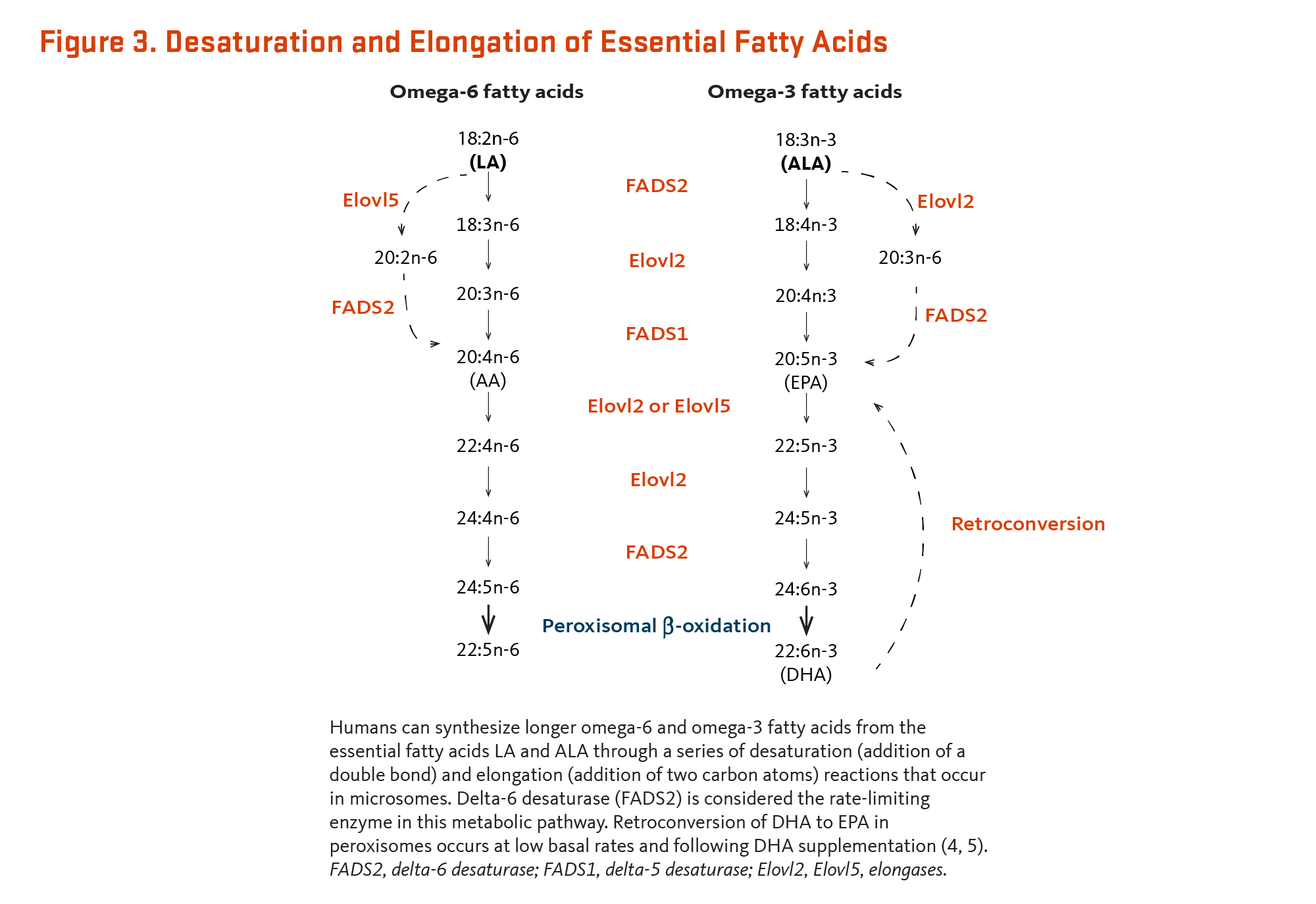
Essential Fatty Acids | Linus Pauling Institute | Oregon State University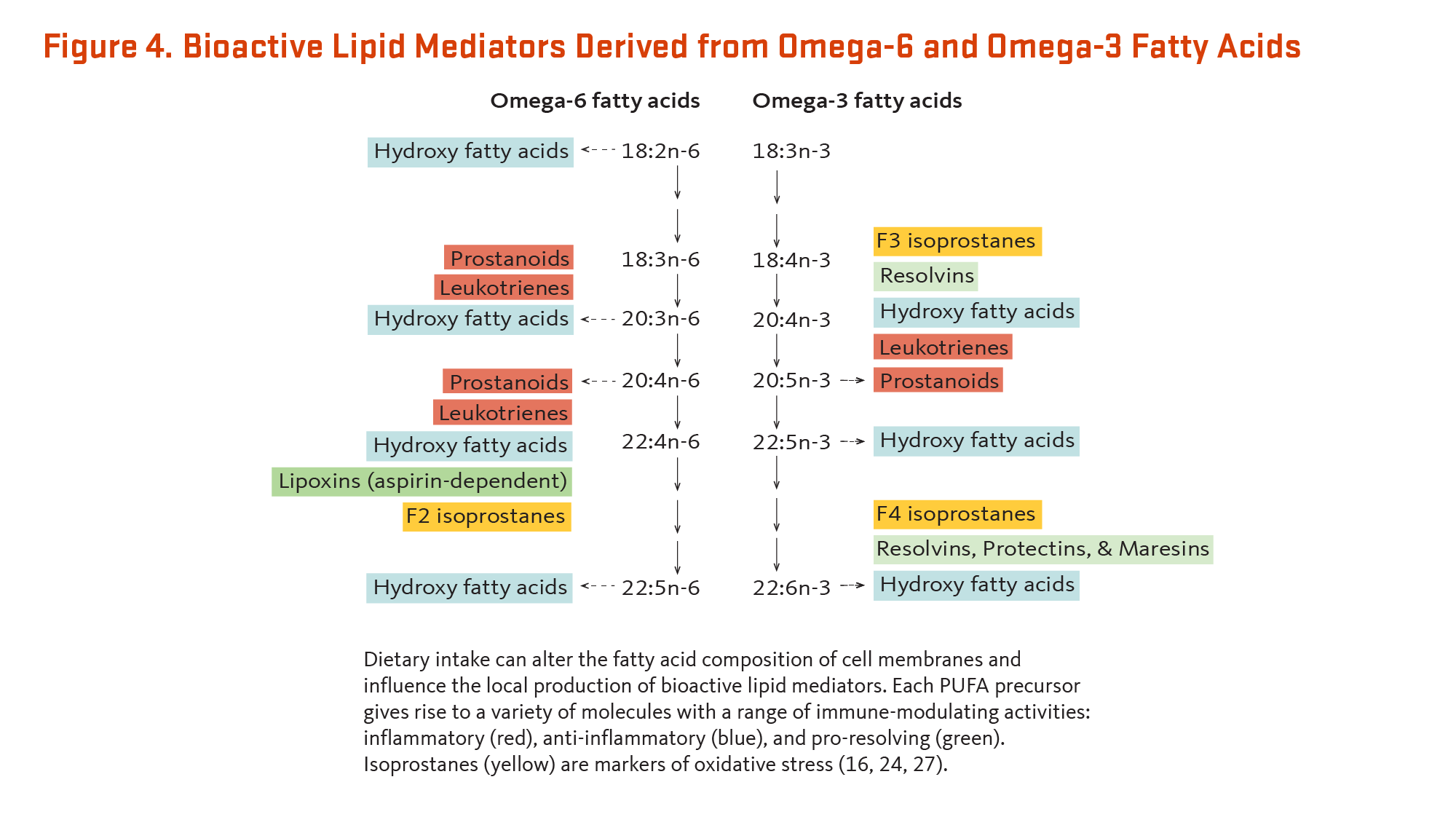
Essential Fatty Acids | Linus Pauling Institute | Oregon State University
Solved: - Question 1 1 Pts According To The National Insti... | Chegg.com
Solved: U. CHUICLY JORI Which Of The Following Nutrients I... | Chegg.com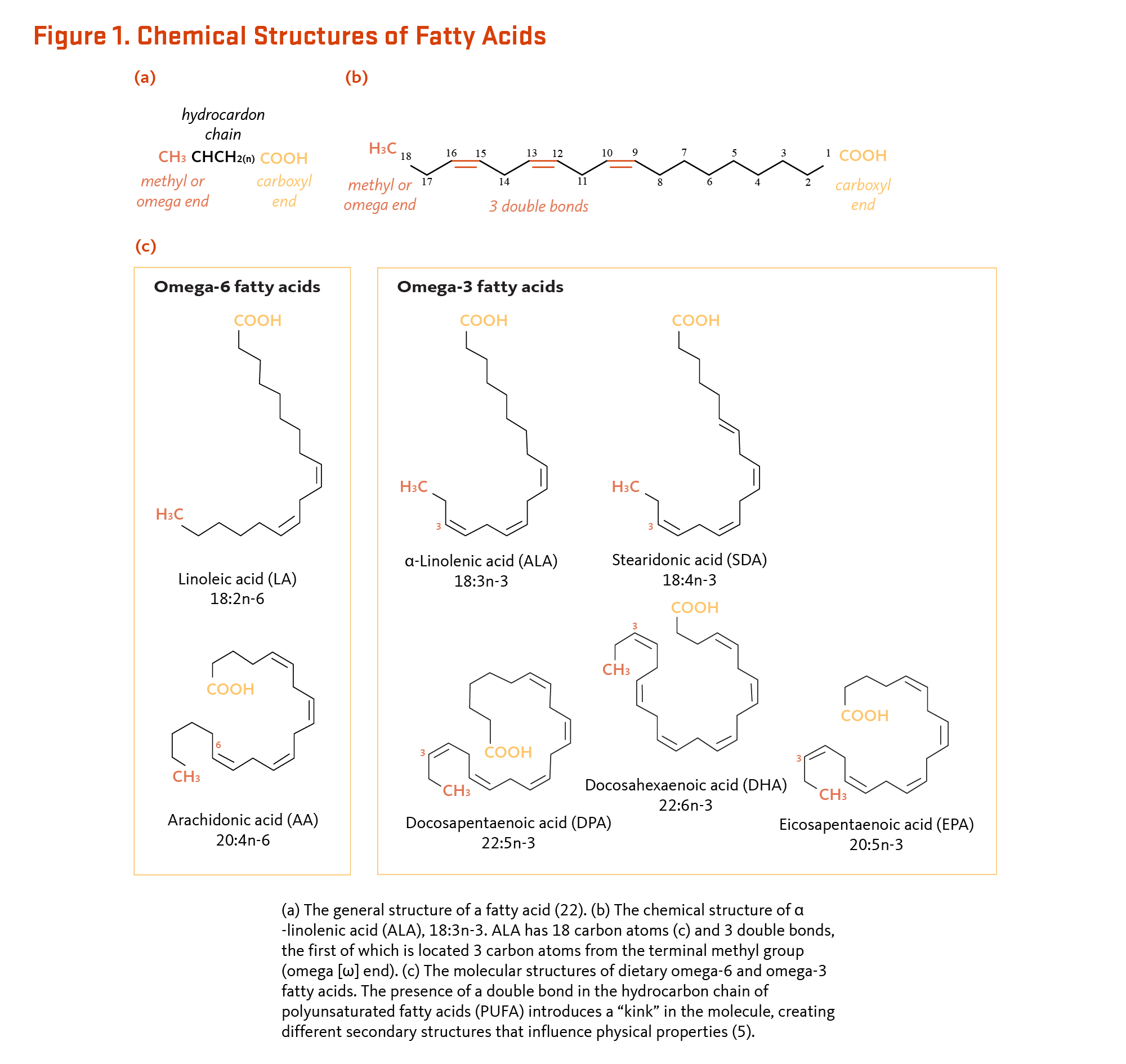
Essential Fatty Acids | Linus Pauling Institute | Oregon State University
Solved: SWC Cture.com D Question 1 1 Pts According To The ... | Chegg.com
Essential Fatty Acids | Linus Pauling Institute | Oregon State University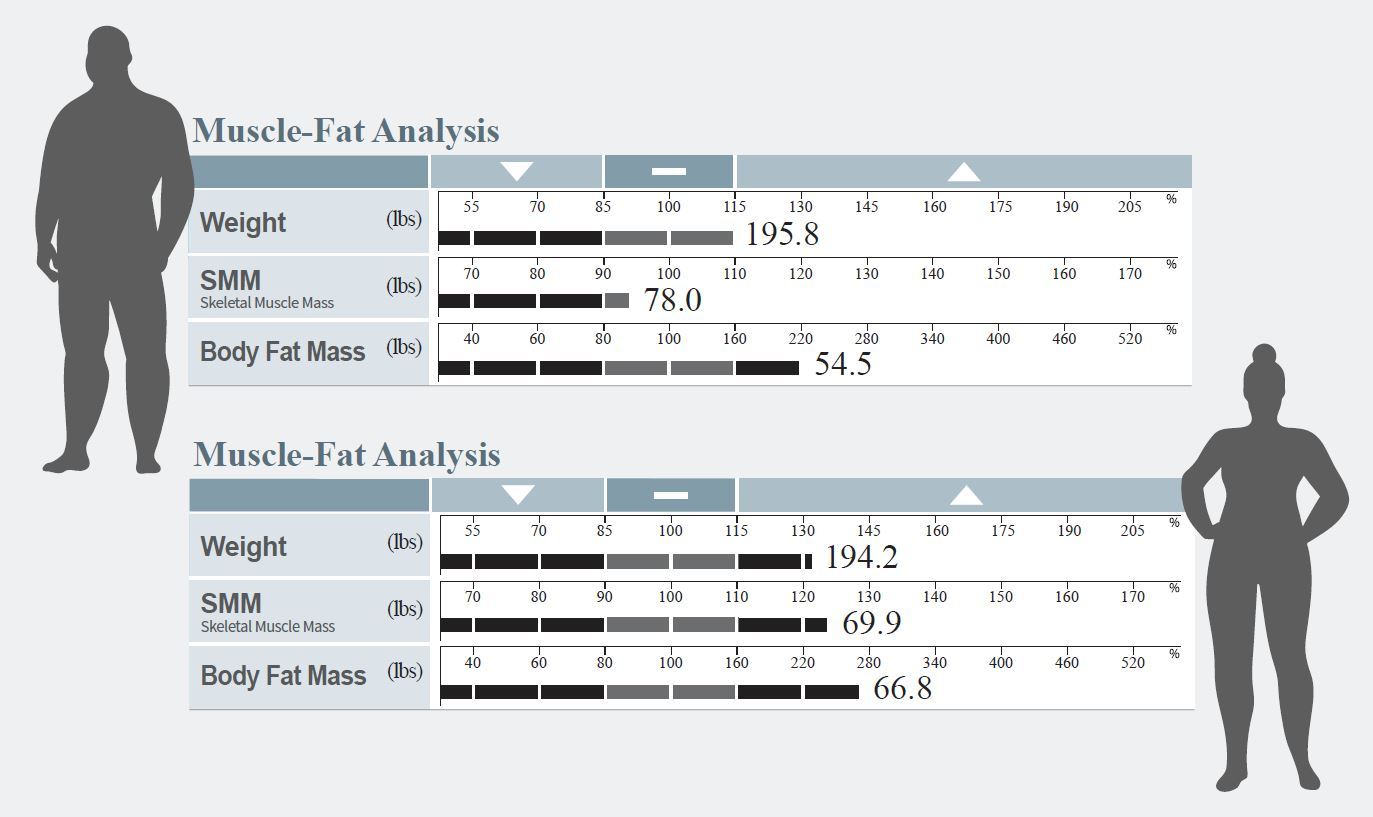
Is It Healthy to Have a Low Body Fat Percentage? - InBody USA
Solved: Which Of The Following Are Not Considered Essentia... | Chegg.com
Your Guide to the Essential Fatty Acids - Fitoru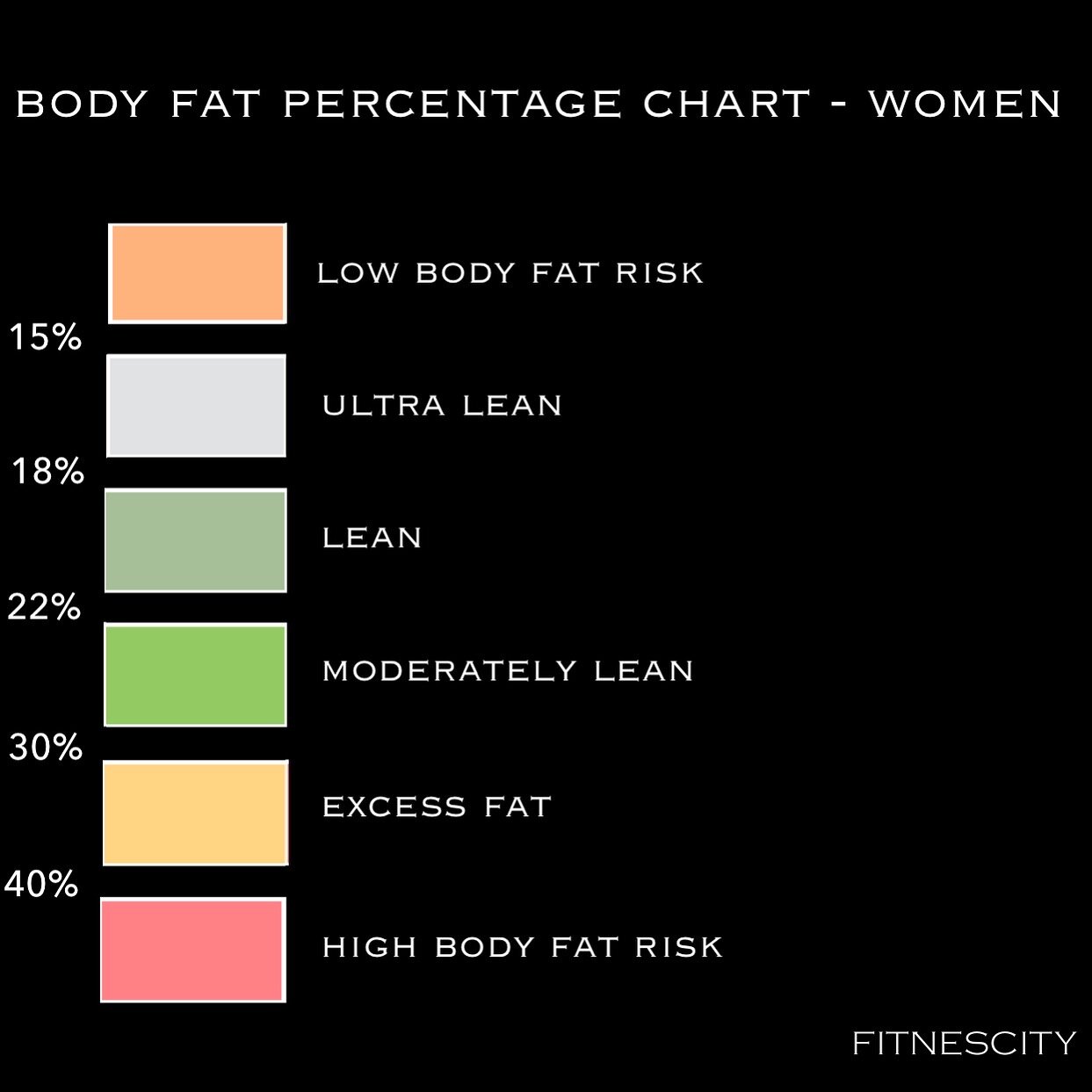
Ideal Body Fat Percentage Chart (2020): Ideal Body Fat for Men and Women — Fitness Lab Testing. Assessments.
Essential fatty acid - Wikipedia
Essential Fatty Acids and Skin Health | Linus Pauling Institute | Oregon State University
Solved: Which Of The Following Are Not Considered Essentia... | Chegg.com
Role of Dietary Fatty Acids in Dogs & Cats | Today's Veterinary Practice
What Is A Healthy Body Fat Percentage? | Coach
Types of Body Fat: Benefits, Risks, Diet, Body Fat Percentage & More
Good Fat, Bad Fat and Killer Fat:
Omega-9 Fatty Acid - an overview | ScienceDirect Topics
Types of Body Fat: Benefits, Risks, Diet, Body Fat Percentage & More
Lipids) Fats. Why Do We Need Fat in Our Diet? Fat helps the body absorb vitamins A, D, E, and K Body fat serves as a reserve supply of energy in the. -
Adipose tissue fatty acid chain length and mono-unsaturation increases with obesity and insulin resistance | Scientific Reports
2.34 Essential Fatty Acids & Eicosanoids | Nutrition Flexbook
Controversial Nutrients That Potentially Affect Preterm Neurodevelopment: Essential Fatty Acids and Iron | Pediatric Research
Why Are Liquor Stores Considered Essential Businesses? | Allrecipes
There Are 6 Types Of Body Fat—Here's What You Need To Know About Them | Women's Health
Essential Fatty Acid - an overview | ScienceDirect Topics
Role of Dietary Fatty Acids in Dogs & Cats | Today's Veterinary Practice
Fatty Acids -- FAQ
Essential fatty acids - PSYC 335 - TAMU - StuDocu
12 healthy high-fat foods/GettyImages-1198222559-9f494d282d3d43c7a208488b3cec3c0e.jpg)
Body Composition and Body Fat Percentage
Oh My Omega: The Difference Between Omega-3, 6, and 9 – Food Insight
Essential fatty acids
Wellness News Network
Solved: The Reason Some Unsaturated Fats Are Considered 'e... | Chegg.com
PDF) Review of Intravenous Lipid Emulsion Therapy
Polyunsaturated Fatty Acid - an overview | ScienceDirect Topics
 Solved: Which Of The Following Is Considered Essential Fat... | Chegg.com
Solved: Which Of The Following Is Considered Essential Fat... | Chegg.com





























/GettyImages-1198222559-9f494d282d3d43c7a208488b3cec3c0e.jpg)





Posting Komentar untuk "which of the following is considered essential fat?"